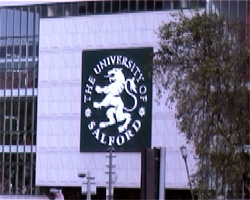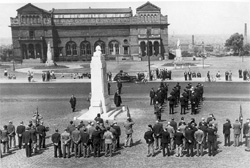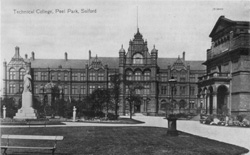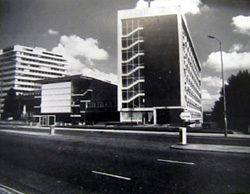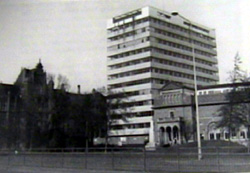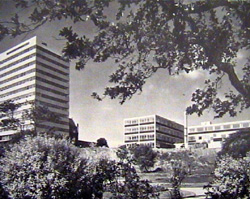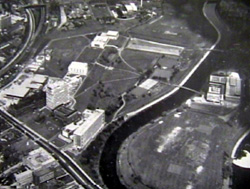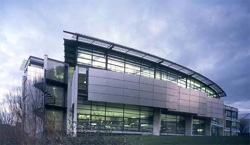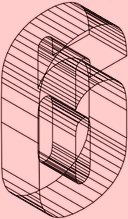

|
|
|
|
|
|
|||
|
|
|||
"The University is just a mile and a half from Manchester City Centre, on a leafy parkside campus, next to the River Irwell, at the starting point of the Irwell Valley nature trail and encompassing part of the Irwell Sculpture trail....There are two bars on campus and two pubs, the Wallness Tavern and the Pint Pot, on the outskirts. Also on campus are Banks, shops (including a bookshop, snack bars, restaurants, and sports facilities). Salford Shopping Precinct Shopping Centre which caters for most day-to-day shopping needs, is five minutes away by bus."
The Salford University Undergraduate Prospectus 2003
History
The University of Salford was formed in 1967 and has it's earliest roots in two Victorian institutions, the Salford Working Men's College (1858) and Pendleton Mechanics Institute (1850) which combine in 1896 to form the Salford Technical Institute housed on the current campus at the Crescent. These institutions all had direct links to the surrounding industry in the area at the time and were set up and, in large part, funded by local industrialist's. In 1958 the Institute became known as the Royal College of Advanced Technology after changes in educational funding by the Wilson government, before finally becoming the University of Salford in 1967. In 1996 the University merged with the University College Salford on the neighboring Frederick Road site, to form the campus seen today.
Data
Today the University of Salford Comprises:
18,000 students, including 2,500 postgrads and 2,000 international students from 80 countries.
2,879 total staff comprising 1,047 academic staff and 1,832 admin.
A 65 acre campus area, with 40 buildings a gross floor area of 170,750sqm, and 4,201 residential rooms.
2069 parking spaces in 6 car parks.
577,613 books and 1,557 readers places.
A £1.65m annual utilities bill, equal to £100 per student.
An annual turnover of £110m.
Development Strategy
The Strategic Framework document published by the University in 1999 makes it clear how important the University believes it's local and national profile to be:-
"Growth in student numbers has been the cornerstone of conventional planning to achieve income growth but with the core full-time undergraduate market nearing saturation, and a low marginal rate of funding, a different strategy is called for. The University must look to areas that are less constrained or that promise a better rate of return, such as overseas and postgraduate student income and commercial activities."
"The University's distinctive identity is shaped by local and regional involvement; a commitment to social inclusion including widening participation ... and a professionally enterprising organisation helping regeneration in the broadest sense. To develop this identity further, there is a need to encourage greater collaboration across disciplines and across the core activities, to intensify the University's focus on real world problems and our willingness to engage and work with business and the community."
"As the Region becomes a more significant entity within the political landscape ... it is important for the University to develop a strong regional profile and, by promoting appropriate partnerships and strategic alliances, to become increasingly influential in the formulation of regional policies - not only within the educational sector but also much more widely across key economic and social issues. An important aspect of creating a strong regional profile is to build close and trusting partnerships locally, with the City of Salford, and particularly with the communities which are the neighbors of the University".
Click Here to read the Strategic Framework Document.
Corporate Identity
Perhaps the most intriguing document available on the Universities website is the Corporate Identity Guidelines document that spells out precisely how the University Logo may and may not be used. This 13 page document will inform you about correct size and proportion, colour, space tolerance, positioning misuse and certified corporate typefaces, illustrated with examples of how not to proceed.
This gives an illuminating insight into how preciously the University guards it's corporate brand image. Over recent years higher education establishments have become seemingly more and more analogous to corporate giants selling education. In this context, where fickle student/consumers need to be seduced, the nuances of the brand message, and therefore it's protection become imperative.
This attitude to branding is evident throughout the campus where every building sports a corporate green sign with the buildings name, function and regulation sized logo in white print. This ubiquitous branding seems reinforce the feeling that the campus is an enclave in the surrounding urban fabric.
